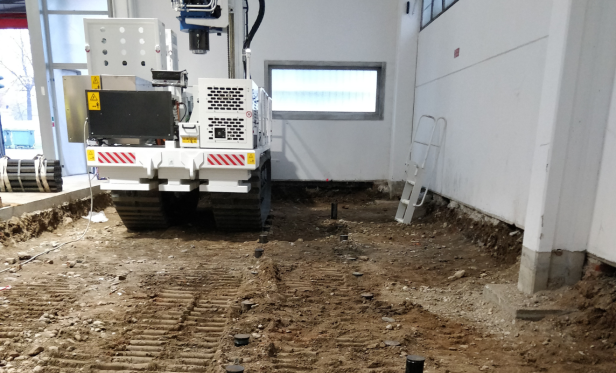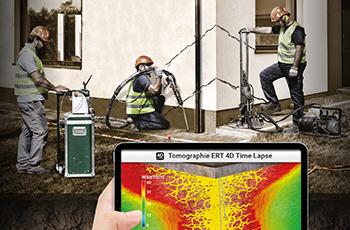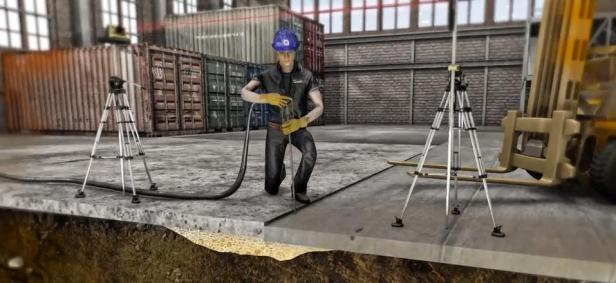GEOSEC FRANCE SASU
ROBOPILE®
ROBOPILE ®: SELF-PROPELLED STEEL PILE DRIVING DEVICE
ROBOPILE ® is the latest technological frontier in the installation of steel micropiles for deep foundations of buildings and roadways.
The industrial application is intended for both new and large-scale works as well as for existing buildings and infrastructures.
ROBOPILE ® is a modern and highly automated industrial patented technology for the reference sector. The only one of its kind ever made
previously and designed for:
• improve the efficiency of application and consolidation installation with steel micropiles (more than 80 piles/day for a minimum diameter of 76 mm – more than 60 piles/day for a maximum diameter of 152 mm);
• improve safety conditions on the construction site by significantly reducing manual handling activities on board machines.
Micropiles are currently used in two main applications: as structural elements and as soil consolidation and reinforcement elements .
The use cases of micropiles as structural elements are: foundations of new structures, foundation piles, static improvements of old structures located in seismic zones, erosion protection and soil retaining works. As soil consolidation elements, micropiles are used for slope stabilization, to reduce subsidence and improve the structural stability of existing works.
The scope of application of this technique has therefore expanded and it can meet a wide range of needs.
Here is a list of examples:
• stop or prevent differential vertical subsidence of foundations or floors
(civilians, industrialists, etc.);
• increase the load-bearing capacity of existing foundations and roadways;
The geotechnical problem
• repair or replace deteriorated or inadequate foundations;
• provide protection against erosion and degradation of the foundation surface;
• raise the collapsed foundations by restoring their original plane;
• transfer loads to deeper layers in the case of very poor surface soils;
• bypass swollen or pliable surface soils particularly sensitive to seasonal variations in water content;
• reduce movements of existing structures in the presence of deep excavation work;
• provide a resistant action to axial tensile loads;
• carry out slope stabilization work (shearing and bending of piles);
• carry out support work in the presence of excavation work.



 Français
Français 










